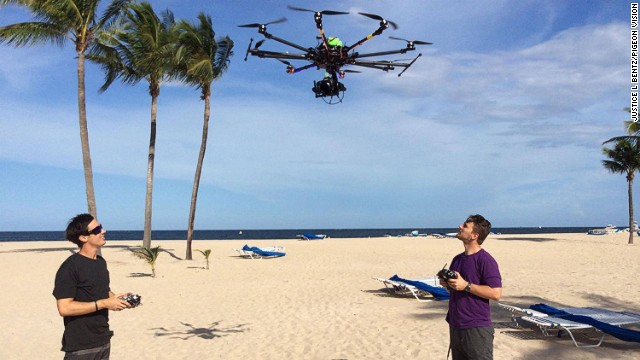Legal drone use expands, but not fast enough for some
Wednesday the Federal Aviation Administration granted five new exemptions to four companies to operate the remote controlled aircraft for commercial purposes.
The companies that received permission to fly the drones UAS, Trimble Navigation, VDOS Global, Clayco, and Woolpert, will use them to for aerial surveying, construction site monitoring and oil rig flare stack inspections.
The drones will be under 55 pounds and must stay within sight of the operator.
For decades hobbyists have been allowed to operate the remote controlled aircraft for recreational purposes close to the ground and away from airports, but any legal commercial use requires special exemptions from the FAA.
“Unmanned aircraft offer a tremendous opportunity to spur innovation and economic activity by enabling many businesses to develop better products and services for their customers and the American public,” Transportation Secretary Anthony Foxx said in a press release on Wednesday. “We want to foster commercial uses of this exciting technology while taking a responsible approach to the safety of America’s airspace.”
Earlier this year the FAA issued waivers to allow seven motion picture companies to use drones.
The agency says a total of 167 requests for waivers have been received in 2014.
In a congressional hearing Wednesday lawmakers criticized the pace of the FAA’s efforts to integrate the drones into the national airspace.
“Road builders in Germany and farmers in France today are enjoying economic benefits from UAS because safety regulators there have found ways to permit such flights,” Congressman Frank LoBiondo said. “I can’t help but wonder, that if the Germans, the French and the Canadians do some of these things today, then why can’t we also be doing that?”
Earlier this week in a letter to the FAA, obtained the Wall Street Journal, Amazon.com warned it could take its drone delivery development outside of the United States.
“Without approval of our testing in the United States, we will be forced to continue expanding our Prime Air R&D footprint abroad,” Paul Misener, Vice President of Global Public Policy wrote.
In Wednesday’s hearing the FAA acknowledged that it was not moving fast enough.
“We all agree that that project is taking too long,” Peggy Gilligan, FAA Associate Administrator for Aviation Safety told the committee. “We are moving forward with UAS integration through rule-making, as mandated by (Congress).”
The most significant risk for drone use and the challenge for regulators working to safely integrate them into the national airspace is the potential that one could hit a passenger plane.
A drone could strike a wing and cause a fuel explosion or sucked into an engine potentially causing a catastrophic failure.
“We have all seen photos of the damage that can be cause to an airplane when a bird strikes in flight,” Captain Lee Moak of the Air Line Pilots Association Union told the committee. “Unmanned aircraft can be much smaller or much larger than birds but they harbored added risk in that they carry batteries, motors and other hard metal components.”
Last month in Oklahoma City a drone came within 20 feet of striking a plane, forcing the aircraft to take evasive action, according to FAA reports obtained by Sen. Diane Feinstein. More than 190 incidents were reported over the last nine months, including two dozen near collisions.
And just this week it was revealed that a small drone narrowly missed a commercial airliner in July as it approached London’s Heathrow Airport.
“I’ve got a quad copter on Christmas list as I suspect quite a few people do,” Congressman Blake Farenthold said at Wednesday’s hearing. “I think this is a more dangerous scenario that you guys need to be putting a priority on. There are too many of these out here that are capable of going beyond couple hundred feet but actually going up to 6,000 feet, we’ve got a problem and our failure to regulate them — we’re going to have a genie out of the bottle issue.”
http://www.cnn.com/2014/12/10/politics/legal-drone-use-expands-but-not-fast-enough-for-some/index.html



